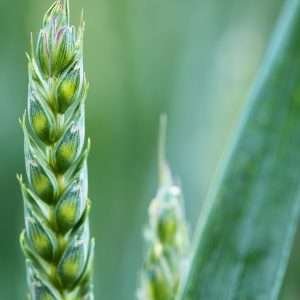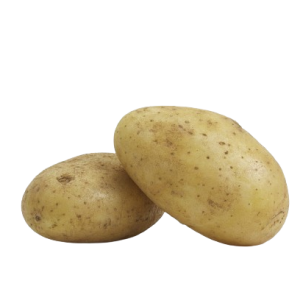Rice 【Scientific Name】 Oryxa sativa
【1】Promote seed germination and regulate seedling growth
Sodium Nitrophenolate
It has the effect of breaking rice seed dormancy and promoting germination and root growth. Using Panpan Industy’s sodium nitrophenolate 3-6 mg/L liquid, soaking the seeds of single-season late rice for 48 hours, the germination rate was increased by 27.3%-31.3% compared with the clear water control, the average number of seedlings per plant increased by 0.26-0.56, the width of the stem base and the white root of the seedlings were increased by 0.26-0.56. number increases. It can be mixed with some fungicides and insecticides during the soaking process, but pay attention to the dosage.
Triacontanol
If the seeds are soaked with 0.1% triacontanol emulsion 1 mg/L, the early rice is soaked for 48 hours, and the middle and late rice is soaked for 24 hours. After soaking, the germination can be accelerated. After the rice seeds were soaked with triacontanol from Panpan Industry, the germination rate was increased by about 2% and the germination potential was increased by about 8% compared with the control. (Note: Seed soaking can be mixed with bactericides such as acetylallicin.)
Brassinolide
Seed soaking treatment with 0.01~0.02 mg/brassic lactone solution for 36h can promote germination potential and germination rate, promote seed vigor, promote neat germination, and facilitate later growth.
Gibberellic acid
Soak the seeds with 10-50 mg/L gibberellic acid solution for 24 hours before sowing. The ratio of the solution to the seed volume is 1:0.8. During this period, turning several times can improve the germination rate and germination potential of rice, and promote the germination to be neat.
6-BA
Dilute 100 times with 2% 6-BA solution, that is, soak seeds with 20 mgL liquid, soak the seeds of early rice for 48 hours, and soak the seeds of middle and late rice for 24 hours, then germination can be promoted. Experiments in Jiashan, Haining, Zhejiang, etc., after soaking the seeds of early rice with 6-BA, the germination rate of the seeds was increased by 5% compared with the control (water treatment), and the germination was fast and neat.It is beneficial to improve the quality of seedlings and enhance the resistance to stress; the effect of preventing and controlling rotten seedlings of early rice is 48%, and the rate of seedling formation can be increased by 21.8%, thereby increasing the yield of early rice in the later stage. (Note: It must be used in strict accordance with the specified concentration, and can be mixed with fungicides.)
【2】Control prosperous growth and prevent lodging
Prohexadione Calcium
In Anhui and Jiangsu, the experiments on three varieties of “Huiliangyou No. 6”, “Wuyunjing No. 8” and “C Liangyou 343” showed that spraying 75-125 mg/ L in the rice seedling stage prohexadione calcium solution, can shorten the base node spacing, effectively control the prosperous growth, reduce lodging, and increase the yield by 5% on average.The effect of prohexadione on rice yield did not work in one aspect, but in many aspects, such as 1000-grain weight, seed setting rate, and ear length.The effect of prohexadione calcium on the number of ears per mu, total grain number, thousand-grain weight and seed setting rate of the three kinds of rice did not show a certain regularity, and the effects of different daily concentrations were also different on different varieties.
Paclobutrazol
Paclobutrazol has the effect of delaying the growth of continuous-cropping late rice seedlings, controlling stem and leaf elongation, preventing leggy growth, promoting root growth, increasing leaf division, enhancing photosynthesis, benefiting multi-leaf and strong seedlings, increasing the elasticity of seedling age, and preventing seedlings after transplanting. Destroyed seedlings” and so on.Paclobutrazol is mainly suitable for continuous cropping of late rice seedlings. Spraying with paclobutrazol 300 mg/I liquid at the 1 leaf and 1 heart stage of the seedlings can increase the seedlings and control the plant height. According to the experiment in Xiaoshan City, the average height of continuous-cropping late rice seedlings treated with paclobutrazol 300 mg/L was 31.4 cm, which was 70%-75% of the control, and the growth rate was 21.7%.The number of leaves per plant was 0.97, an increase of 1.85 times compared with 0.34 in the control. At the same time, the seedlings showed strong root system, more white roots, and strong rooting power.
Spraying 100~300 mg/L 15% paclobutrazol WP 7d before jointing, booting stage, heading stage and full grain filling stage of rice can effectively inhibit its plant height. As far as the spraying period was concerned, the heading period was the most sensitive to spraying, and the average plant height was 14.9% shorter than that of the control sprayed with water.From the analysis of the influence of comprehensive factors such as biological characteristics and yield of rice, the treatments of spraying 300 mg/L 7 days before jointing and spraying 100 mg/L at booting and heading stage were more moderate, and their plant heights were reduced by 12.63% compared with the control. % and 11.0%, the yield increased by 6.9% and 11.2% compared with the control.However, after the multi-site and multi-variety experiments were verified, paclobutrazol was applied at the booting stage, heading stage and grain-filling stage. When the concentration was too high, it was easy to affect panicle formation and panicle development, resulting in yield reduction. Therefore, it is recommended to apply it 7-10 days before rice jointing.
Ethephon
Spraying 500 mg/L ethephon at the 4-leaf stage of early rice seedlings has a certain effect on improving the quality of seedlings. However, ethephon soaking and spraying ethephon at the 3-leaf stage of late rice will not only make the seedlings dwarfed and the largest leaves become shorter and narrower, but also adversely affect the quality of the seedlings, which is worth noting.(Note: Strictly control the concentration of use, choose a sunny day with a temperature of 20~30°C for spraying; ethephon is decomposed by alkali and cannot be mixed with alkaline pesticides.)
Adjust the ring. Uniconazole
At the early stage of rice jointing, 15% of the ring is applied. The water dispersible granules of unconazole 18.0~22.5g/hm2 can reduce the plant height of rice by 8.9%~14.6% and increase the yield by 6.1%~8.0%.
【3】Improve rice seed setting rate and increase yield
6-BA
At the early ear stage of rice, foliar spraying with 40mg/L 6-BA liquid can lead to full heading and grain filling 3 days earlier than water spraying, increase the number of effective panicles and grains per panicle, and increase the seed setting rate by 3.7% and 4.5%. The thousand-grain weight is increased by 0.7g, and the influence of autumn wind and rain on rice flowering and pollination can be reduced, and the yield increase effect is remarkable.
Gibberellic acid
From the beginning of the ear to the full ear, 25-37.5 mg/L gibberellic acid solution can be used for foliar spraying, which can improve the plant height of tillering ears, promote the uniformity of rice ears, increase the later stage of splitting into ears, and improve the seed setting rate. , to reduce shedding loss of the spikelet part at the harvesting point.In the case of normal growth of early rice and continuous cropping late rice, it is appropriate to spray when the heading is 60% to 70% to solve the problem of “warped rice head”. It should be sprayed when the temperature rises after the first cold dew wind. (Note: Strictly control the use period and dosage. Too early and excessive amounts will easily cause the rice plants to be too high and lodging.)
Yield(P-iodophenoxyacetic Acid)
At the heading stage of rice, spraying with 20-40 mg/L Yield-Increasing Spirit liquid can promote the transportation of plant nutrients, and make the nitrogen, phosphorus and other nutrients in the rice to be reasonably distributed, so that the nutrients can move to the rice ears, thereby achieve the effect of increasing production.According to the Shaoxing Donghu farm experiment, the yield of early rice can be increased by 9.3% after spraying 50 kg of 25 mg/L Yield-Increasing Spirit Liquid per mu.
Triacontanol
Foliar spraying of 1-2 mg/L triacontanol once in the 2-3 stage of rice ear differentiation and booting stage can promote the growth and development of rice plants, improve carbon and nitrogen metabolism levels, and increase the number of effective panicles and grains. , the number of grains per spike, increase the seed setting rate, thousand-grain weight and drying rate.Compared with the control, the treatment increased the average yield of dry grains by 0.964t/hm2, the increase rate was 15.4%, and the quality was improved. According to the data of acceptance, seed testing and production testing at multiple points for many years, the yield increase effect is stable and the reproducibility is good. The advantages of simple and convenient use, etc., are of great significance to increasing grain output and pollution-free agriculture.
Sodium Nitrophenolate
Using sodium nitrophenolate before transplanting rice seedlings and during the field stage can quickly restore rice growth ability, improve heading uniformity and seed setting rate.According to the experiments in Lin’an, Tonglu, Zhejiang and other places, the concentration of 3-4 mg/L of the liquid was sprayed once 4 to 5 days before the transplanting of the seedlings in the hybrid seed production field, at the booting stage and at the full heading stage, and sprayed per mu each time. 50 kg liquid medicine can increase the seed setting rate by 1.9%~2.7% and increase the yield by 12%~22%. It can also be mixed with 3 mg/L sodium nitrophenolate and gibberellic acid, which has a synergistic effect.
Growth hormones
According to Zheng Leya et al.’s experiment on the hybrid medium indica rice variety “Xinliangyou 6”, 20 mg/L indole acetic acid or 50 mg/L naphthalene acetic acid (sodium) was used as foliar spray twice at the booting stage and heading stage of rice.It can improve the net photosynthetic rate of rice flag leaves, increase the number of grains per panicle, seed setting rate and thousand-grain weight of rice plants to different degrees, effectively delay later senescence, and obtain high yield. Among them, the effect of tea acetic acid is better than that of indole acetic acid.
Brassinolide
The use of aqueous solution of brassinolide at the stage of rice separation, the end of rice separation, the breaking heading stage, and the flowering and grain filling stage can promote the growth and development of rice. The number of grains and 1000-grain weight of rice are significantly increased, and the yield of rice is increased. More obvious, its growth rate can reach 20% to 30%, which has the prospect of promotion and application.Brassinolide aqueous solution is used in paddy field, the effective concentration is 0.025~0.1 mg/L, and the dosage per mu is 50 kg. It is recommended to spray fine mist (pore size 1.0 mm) in small holes to enhance the adhesive force of the liquid medicine and give full play to its effect. Brassinolide aqueous solution is used in paddy field, which is safe and free of phytotoxicity to rice within the specified concentration range, and no adverse phenomenon has been found.
Thidiazuron
In the rice seedling stage and flowering stage, spraying 3 mg/L thidiazuron on each foliar surface can improve the quality of rice agronomic traits, increase the number of grains per ear and seed setting rate, and reduce the number of rice seedlings. Increase production by 15.9%.
Diethyl aminoethyl hexanoate
With 10,67~16 mg/L diethyl aminoethyl hexanoate sprayed twice at the seedling stage, with an interval of 7 d, the rice yield can be increased by more than 6.15%, and it is safe to the environment.
【4】Improve the yield of hybrid water pleat seed production
Paclobutrazol
Spraying paclobutrazol in hybrid rice seed production has a good effect on preventing germination on ears. Spraying 750 g/hm2 of paclobutrazol at about 15d after full heading can not only significantly reduce the bud and valley rate, but also improve the seed setting rate and increase the yield.
Gibberellic acid
The physiological characteristics of the female parent (sterile line) in the seed production field are serious. After spraying gibberellic acid, the stigma exposure rate can reach about 95%, and the angle of the flag leaf is significantly increased, which is 18%~20% larger than that of the control. The leaf layer is obviously pushed out, thereby increasing the probability of pollination.Therefore, gibberellic acid has the functions of solving the necking, regulating the ratio of the parent plant height and the probability of meeting at the flowering stage, and can improve the seed setting rate and yield of seed production. According to the determination of “Shanyou 64” hybrid combination in Zhejiang Province, using 5g of 85% gibberellic acid per mu, the necking rate is 29.3%~31.39% less than the control, the seed setting rate is increased by 16.7%~19.8%, and the yield is increased by 63.9%~91.3% %.
Generally, it is sprayed for 2~3 times in a row. The first spray is when the female parent is heading 5%~10%, and the active ingredient of gibberellic acid is 1~2g per mu; the second time is 3~4g; the third time depends on the mother parent. Depends on the degree of neck elongation. Generally, the total amount of 3 times is 12~16g.
Attention should be paid to the use, strictly control the first spraying period, and it is not ideal to solve the neck of the female parent too early or too late, and at the same time, it is necessary to strictly control the dosage per mu. The plant height ratio of the parental parent should be coordinated (the male parent should be slightly higher than the female parent) to improve the probability of pollination, and other considerations are the same as those of conventional rice.
Triacontanol and Gibberellic Acid
Using a mixture of triacontanol and gibberellic acid in hybrid rice seed production, the yield increase effect is more obvious than that of gibberellic acid alone, which is beneficial to improve the yield increase effect of gibberellic acid.Triacontanol also improves the photosynthetic phosphorylation of rice, increases the utilization rate of light energy, increases the proportion of the female parent before noon, and promotes the meeting of the parent and the female parent during the flowering period. The two have different effects, but the purpose is the same. A synergistic effect is produced, so that the seed setting rate and yield are significantly improved compared with the individual spraying.The rice “Zhenshan 97 A” was sprayed with 0.5 mg/L triacontanol and 25 mg/L gibberellic acid at the head-starting stage of the female parent. about.
Triazolone and Gibberellic Acid
Before heading, foliar spraying of gibberellic acid, triazolone, KH2 PO4, etc., can effectively prevent the degradation of spikelets, strengthen the culm and panicle, prolong the functional period of leaves, increase the seed setting rate, increase the grain weight, and significantly increase the yield. Among them, spraying 10 mg/L gibberellic acid + 300 mg/L triazolone + 200 mg/L KH2 PO4 increased the production most significantly.
【5】Application test of other regulators in rice
Diethyl aminoethyl hexanoate
The damage of low temperature to rice seedlings is widespread in my country, which seriously affects rice production. After rice is damaged by low temperature, the survival rate of seedlings is one of the most basic indicators to measure the resistance of rice population to cold damage.The test results showed that the survival rate of rice seedlings soaked with 10 mg/L diethyl aminoethyl hexanoate for 36 h was higher than that of the control after low temperature injury, indicating that diethyl aminoethyl hexanoate could enhance the low temperature resistance ability of rice population, which was similar to the effect of cytokinin on plant cold resistance. The effects of sex are consistent.
Naphthalene Acetic Acid (Sodium)
Naphthalene acetic acid (sodium) in the range of 0.0001~0.01 mg/kg (nutrient soil) can promote the growth of rice roots and is conducive to the development of adventitious roots, and if it exceeds 5 mg/kg, it will obviously inhibit the growth of roots. It has little effect on the growth of rice buds, and when ≥ 100 mg/kg, it significantly inhibits the growth of buds, indicating that the buds are relatively insensitive to theaacetic acid (sodium).
We are based in Henan, China, start from 2021,sell to South America(31.00%),North America(25.00%),Western Europe(15.00%),Central America(8.00%),Oceania(5.00%),Eastern Asia(5.00%),Eastern Europe(4.00%),Southeast Asia(3.00%),South Asia(2.00%),Africa(00.00%),Mid East(00.00%). There are total about 5-10 people in our office.
Always a pre-production sample before mass production;
Always final Inspection before shipment;
Gibberellin GA3,Cytokinin,Rooting Hormone,Fruit Coloring,Plant Growth Inhibitor
1. Professional supplier of Gibberellic acid,IBA, 6-Benzylaminopurine, CPPU,abscisic acid and other plant growth regulators 2. 12 years exporting experience with customers all over the world 3. Product has been approved by SGS
Accepted Delivery Terms: FOB,CFR,CIF,EXW,FAS,CIP,FCA,CPT,DEQ,DDP,DDU,Express Delivery,DAF,DES;
Accepted Payment Currency:USD,EUR,JPY,CAD,AUD,HKD,GBP,CNY,CHF;
Accepted Payment Type: L/C,D/P D/A,MoneyGram,Credit Card,PayPal,Western Union,Cash,Escrow;
Language Spoken:English,Chinese,Spanish




